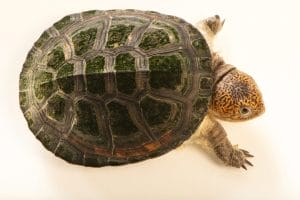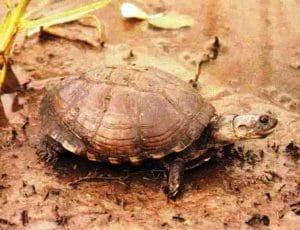Pelusios bechuanicus (Okavango mud turtle)
Home > Turtle Database > Pelusios bechuanicus (Okavango mud turtle)

Pelusios bechuanicus, also known as the Okavango mud turtle, is a freshwater species found mostly in southern Africa. It’s part of the Pelomedusidae family and is known for its adaptability to shallow, seasonal waters.
Native To These Regions
Angola, Botswana, Caprivi Strip (Namibia), Namibia, Okavango Delta (Botswana), Zambia, ZimbabweNative Turtle Species Map – Find Turtles by Region
Scientific Classification
Kingdom: Animalia
Phylum: Chordata
Class: Reptilia
Order: Testudines
Family: Pelomedusidae
Genus: Pelusios
Species: Pelusios bechuanicus
Common Names
Okavango mud turtle
Bechuanaland mud turtle
This Hilarious Turtle Book Might Know Your Pet Better Than You Do
Let’s be real—most turtle care guides feel like reading a textbook written by a sleep-deprived zookeeper.
This one’s not that.
Told from the snarky point of view of a grumpy, judgmental turtle, 21 Turtle Truths You’ll Never Read in a Care Guide is packed with sarcasm, sass, and surprisingly useful insights.
And hey—you don’t have to commit to the whole thing just yet.
Grab 2 free truths from the ebook and get a taste of what your turtle really thinks about your setup, your food choices, and that weird plastic palm tree.
It’s funny, it’s honest, and if you’ve ever owned a turtle who glares at you like you’re the problem—you’ll feel seen.
Identification
Description
This turtle has a domed, oval-shaped shell with smooth edges. The carapace is usually brown to dark olive, while the plastron is lighter, often yellowish. It has a broad head and a long neck that can retract sideways, which is common for African side-necked turtles.
Sexual Dimorphism
Males tend to be smaller and have longer, thicker tails than females. Females are larger with shorter tails and broader shells to accommodate eggs.
Check more turtles from the Pelusios genus
Native Origin and Distribution
Geographical Range
It is found mainly in Botswana, Namibia, Angola, and Zambia. It’s especially common in the Okavango Delta and other floodplain systems.
Preferred Habitat
This species prefers slow-moving or still freshwater bodies like swamps, seasonal pans, floodplains, and marshes. It thrives in shallow, muddy areas rich in aquatic vegetation.
Behavior
Feeding Habits
The Okavango mud turtle is omnivorous. It eats aquatic insects, worms, small fish, and some plant matter. It forages mostly in the water, using its strong sense of smell and quick reflexes.
Predators
Crocodiles, large birds like herons, and mammals such as otters prey on this turtle, especially the young and hatchlings.
Reproduction
Breeding Season
Breeding usually happens during the rainy season when water levels are high and food is plentiful.
Reproductive Method
It lays eggs on land in shallow nests. Clutch size can vary but usually contains 6 to 15 eggs. The hatchlings emerge after a few months, depending on soil temperature and moisture.
Conservation
Extinction Status
It is currently listed as least concern.
Threats
Habitat loss from farming and water diversion is the main risk. Pollution and occasional collection for the pet trade are lesser concerns.
Conservation Measures
Protected areas like the Okavango Delta help support stable populations. There are no major conservation programs focused on this species alone.
Economic Importance
This turtle has little economic impact. In some areas, it may be caught for local food use, but it’s not widely traded or farmed.
Interesting Facts
It belongs to the group of side-necked turtles, which bend their necks sideways under the shell instead of pulling them in straight.
During dry spells, it can burrow into the mud and become inactive until water returns.

About Author
Muntaseer Rahman started keeping pet turtles back in 2013. He also owns the largest Turtle & Tortoise Facebook community in Bangladesh. These days he is mostly active on Facebook.














